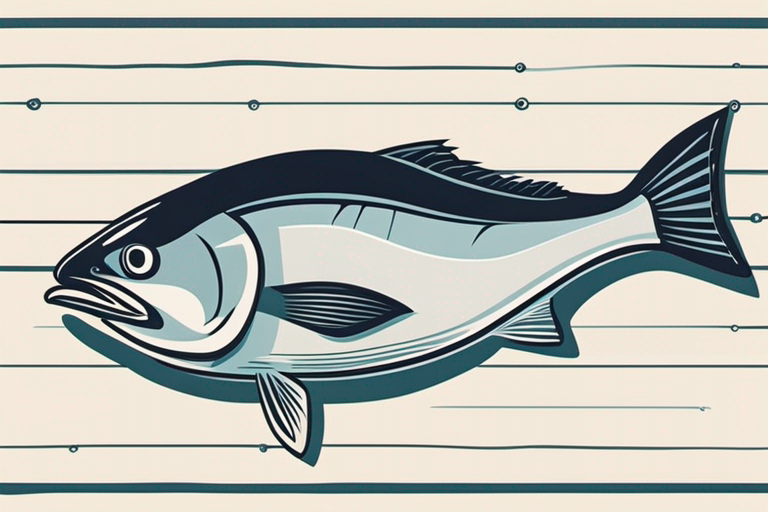
Properly Storing Bluefish to Prevent Spoilage
Get Your Free Food Safety Cheat Sheet
30 most common foods with instant answers. Print it and stick it on your fridge—completely free!
Properly Storing Bluefish to Prevent Spoilage
Bluefish is a popular and flavorful fish with a rich, oily texture that requires proper storage to maintain its freshness and quality. Whether you have caught bluefish yourself or purchased it from a seafood market, knowing how to store it correctly is essential to prevent spoilage and ensure a safe eating experience. In this guide, we will explore the best practices for storing bluefish to maintain its flavor and freshness. (Bluefish)
Why Proper Storage is Important for Bluefish
Bluefish is a delicate seafood that can spoil quickly if not stored properly. Factors such as temperature, air exposure, and moisture levels can affect the quality and safety of bluefish. Improper storage can lead to bacterial growth, off-flavors, and potential foodborne illnesses. By following the guidelines for storing bluefish, you can extend its shelf life and enjoy it at its best.
Best Practices for Storing Bluefish
1. Purchase Fresh Bluefish
- When buying bluefish, choose fish that smells fresh and has clear, bright eyes.
- Look for bluefish that has firm flesh and shiny, moist skin.
- Purchase bluefish from a reputable seafood market or fishmonger to ensure quality.
2. Store Bluefish Immediately
- Bluefish is highly perishable and should be stored promptly after purchase or catch.
- Keep bluefish in a cooler or insulated bag with ice packs if you are transporting it from the market to your home.
3. Refrigerate Bluefish Properly
- Place bluefish in the coldest part of the refrigerator, usually the bottom shelf.
- Store bluefish in an airtight container or sealed plastic bag to prevent odors from spreading to other foods.
- Keep bluefish away from raw meats and poultry to avoid cross-contamination.
4. Use Bluefish Within 2 Days
- Bluefish is best consumed within two days of purchase or catch.
- If you are not planning to eat bluefish immediately, consider freezing it for longer storage.
5. Freeze Bluefish for Extended Storage
- To freeze bluefish, wrap it tightly in plastic wrap or aluminum foil to prevent freezer burn.
- Place the wrapped bluefish in a freezer-safe container or resealable bag.
- Label the container with the date of freezing to track its shelf life.
Tips for Safe Handling of Bluefish
1. Thaw Bluefish Safely
- Thaw frozen bluefish in the refrigerator overnight or under cold running water.
- Avoid thawing bluefish at room temperature to prevent bacterial growth.
2. Cook Bluefish Thoroughly
- Bluefish should be cooked to an internal temperature of 145°F to ensure food safety.
- Use a food thermometer to check the doneness of bluefish before serving.
3. Store Leftover Bluefish Properly
- If you have leftover cooked bluefish, refrigerate it within two hours of cooking.
- Store leftover bluefish in an airtight container in the refrigerator and consume it within 3-4 days.
Conclusion
Properly storing bluefish is essential to maintaining its quality, flavor, and safety. By following the guidelines outlined in this blog post, you can ensure that your bluefish stays fresh and delicious for longer periods. Remember to purchase fresh bluefish, store it in the refrigerator promptly, and use it within a few days for the best results. By practicing safe handling and storage techniques, you can enjoy bluefish dishes with peace of mind knowing that they are safe to eat.
For more information on bluefish and other seafood storage tips, visit bluefish. Happy cooking and enjoy your delicious bluefish dishes! (Bluefish)
Related Posts
Here are some other articles you might find helpful:
- The Ultimate Guide to Properly Storing Buttermilk for Extended Shelf Life
- The Ultimate Guide to Using Leftover Buttermilk in Cooking
- Action Plan: Reviving Freezer-Burned Bluefish for a Delicious Meal
- Decision Guide: Is my Bluefish still safe to eat?
- Is it Safe to Eat Bluefish that has been Frozen for Over a Year?

Authoritative Food Safety References
These agencies and university labs inform every tip and health precaution we publish.
USDA FoodKeeper – Cold Storage Guidelines
Official refrigerator, freezer, and pantry timelines maintained by the U.S. Department of Agriculture.
Visit USDA FoodKeeperFDA Produce Safety Rule & Grower Guidance
Field-to-fridge handling practices that prevent contamination of fruits, vegetables, and leafy greens.
Visit FDA Produce SafetyCDC Foodborne Illness Prevention Hub
Surveillance-backed guidance on pathogens, symptoms, and steps to reduce foodborne illness risk.
Visit CDC Food SafetyUC Davis Postharvest Technology Center
University research detailing optimal storage atmospheres for produce after harvest.
Visit UC Davis PostharvestPenn State Extension – Home Food Preservation & Safety
Peer-reviewed extension bulletins on safe canning, chilling, and reheating practices.
Visit Penn State ExtensionQ: How long can I store bluefish in the refrigerator?
Q: Can I freeze bluefish to extend its shelf life?
Q: How can I tell if bluefish has spoiled?
Q: Can I store cooked bluefish in the refrigerator?
Get Your Free Food Safety Cheat Sheet
30 most common foods with instant answers. Print it and stick it on your fridge—completely free! Want more? Upgrade to the complete guide with 70+ foods.
Scan your food directly and get instant safety info using our AI-powered camera feature.